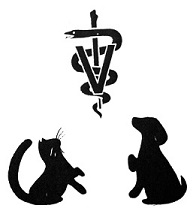Common Poisonous Household and Garden Plants
Plants can be a wonderful addition to any environment. They help clean the air and beautify your surroundings. Although keeping plants around enhances our lives in many ways, be sure to keep those that are poisonous away from the reach of pets and children, as many common household and garden plants can be potentially toxic and fatal. Learn which plants are safe and which are poisonous.
What is poisonous?
Here is a quick reference guide to the more common house and garden plants and foods that are toxic to most all animals and children. If you have these plants or foods, you need not dispose of them-just keep them away from pets and children. (* substances are especially dangerous and can be fatal).
Cardiovascular Toxins
Avocado (leaves, seeds, stem, skin)*
Azalea (entire rhododendron family)
Autumn crocus (Colchicum autumnale)*
Bleeding heart*
Castor bean*
Foxglove (Digitalis)*
Kalanchoe*
Lily-of-the-valley*
Milkweed*
Mistletoe berries*
Mountain laurel
Oleander *
Rosary Pea*
Yew*
Gastrointestinal Toxins
Amaryllis bulb*
Azalea (entire rhododendron family)
Autumn crocus (Colchicum autumnale)*
Bird of Paradise
Bittersweet
Boxwood
Buckeye
Buttercup (Ranunculus)
Caffeine
Castor bean*
Chocolate *
Chrysanthemum (a natural source of pyrethrins)
Clematis
Crocus bulb
Croton (Codiaeum sp.)
Cyclamen bulb
Dumb cane (Dieffenbachia)*
English ivy (All Hedera species of ivy)
Garlic*
Hyacinth bulbs
Holly berries
Iris corms
Lily (bulbs of most species)
Marijuana or hemp (Cannabis)*
Narcissus, daffodil (Narcissus)
Onions*
Pencil cactus/plant*
Potato (leaves and stem)
Rosary Pea*
Spurge (Euphorbia sp.)
Tomatoes (leaves and stem)
Respiratory Toxin
Almonds*
Apricot*
Cherries*
Chinese sacred or heavenly bamboo*
Dumb cane (Dieffenbachia)*
Elderberry, unripe berries*
Hydrangea*
Jimson weed*
Peaches*
Neurological Toxins
Alcohol (all beverages, ethanol, methanol, isopropyl)
Amaryllis bulb*
Azalea (entire rhododendron family)
Bracken fern
Buckeye
Caffeine
Castor bean*
Chocolate*
Choke cherry, unripe berries*
Chrysanthemum (natural source of pyrethrins)
Crocus bulb
Delphinium, larkspur, monkshood*
Lupine species
Marijuana or hemp (Cannabis)*
Mistletoe berries*
Morning glory*
Poinsettia
Potato (leaves and stem)
Rosary Pea*
Tomatoes (leaves and stem)
Kidney/Organ Failure Toxins
Anthurium*
Begonia*
Caladium*
Calla lily*
Grapes/grape stems/seeds
Jack-in-the-pulpit*
Lantana*
Oak*
Philodendron*
Rhubarb leaves*
Scheffelera*
Shamrock*
If you suspect your animal may have ingested any of the substances on this list or if you pet shows any of the symptoms indicated below, you should contact your veterinarian immediately. Take a sample of the suspected toxin and its packaging with you to the veterinarian.
| 


